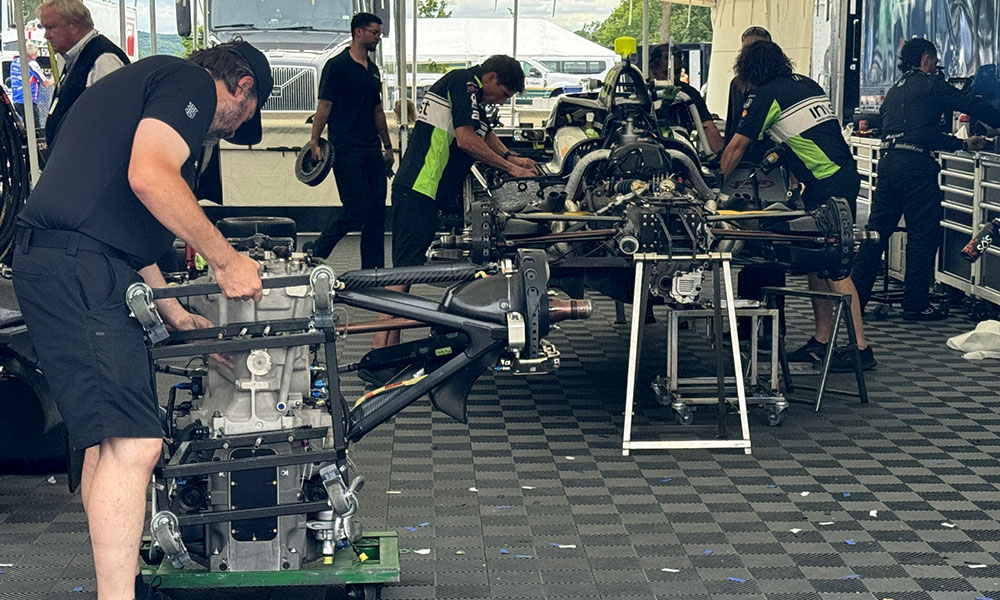
The standard practice after most motor races is to break down the pit equipment and awning, load everything into the transporters, and head home or move onto the next race. For most NTT IndyCar Series teams, the checkered flag waving over Sunday’s late-afternoon race at Road America didn’t signal the end to their days.
With the majority of the field—minus the Chip Ganassi Racing and Juncos Hollinger Racing teams—set to do a hybrid engine test an hour south on Tuesday at the Milwaukee Mile, pit crews pushed their dirty and tired race cars beneath those awnings immediately after the 55-lap race won by Team Penske’s Will Power and began the hybrid conversion process as the sun faded over the paddock.
Replacing the standard bellhousings with the spec hybrid bellhousings designed by Dallara and supplied by Ilmor Engineering was the first task; the spec versions contain the motor generator unit made by Chevrolet and the Energy Storage System made by Honda, plus all of the cooling systems needed to keep the ERS and ESS in the right temperature range.
Thankfully, with the short oval aero package being nearly identical to IndyCar’s road course wing package, a full change to speedway bodywork was not required, but bigger brakes to help stop the heavier cars was also on the to-do list before the 8 p.m. curfew arrived.